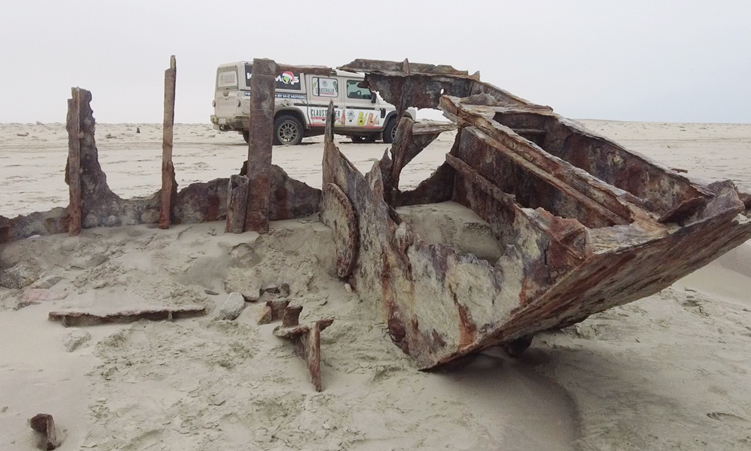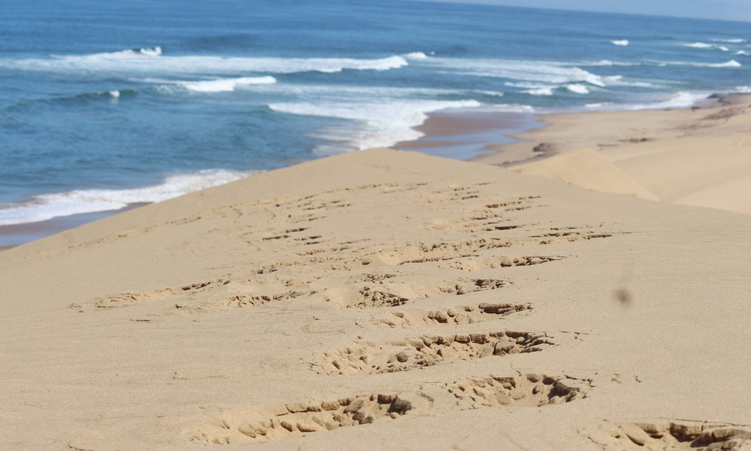Every year, thousands of visitors flock to the coastal regions to enjoy the cool weather, while others look for hidden treasures in and around the Namib Desert.
Top Revs ventured into the Dorob and Namib-Naukluft national parks in the Erongo region doing exactly that.
This mission was twofold: to enjoy the open areas, and to get familiar with the rules and regulations enforced by park authorities.
Sandwich Harbour is a jewel among local and international tourists due to its majestic views, allowing visitors to see the ocean for kilometres unhindered on a clear day, as well as endless Namib Desert dunes to the east.
Visiting the area is highly recommended, ideally under the guidance of an experienced tour operator.
Driving to Sandwich Harbour’s lookout point requires planning as one can only enter the area on the beach during low tide.
Getting trapped during high tide could cost you your vehicle or even your life.
If you’re lucky you may encounter oryx (gemsbok), springbok, jackals or even a hyena or two.
In a desolated area, a water pump gives one a taste of the cold and fresh water under the Namib Desert sand.
This freshwater source is literally a stone’s throw away from the saline Atlantic Ocean.
Driving across dunes requires some skill.
Most tour operators are, however, trained and familiar with the environment and challenges the dunes hold.

Other places of interest are the Khan River and surrounding areas, like the Moon Valley and the Swakop River east of Swakopmund.
Though the area hosts diverse fauna and flora, it is also home to many smallholdings supplying fresh produce like asparagus and other vegetables to the local market, hotels and restaurants.
There are also many horse-breeding stables on the outskirts of Swakopmund.
This is due to favourable weather conditions.
A permit is needed to visit this area, but is free of charge and available at the offices of the environment ministry at Swakopmund.
The Khan area is home to many plants like the Welwitschia mirabilis, which is also Namibia’s national plant. Other plants like the dollar bush, the tamarisk and the occasional ‘sout slaai’ plant can be found in the namib-Naukluft National Park.
This diverse plant can be used to quench one’s thirst, while the leaves can be used to wash one’s hands.
Another jewel of the area south of Henties Bay up to the Ugab River gate are the shipwrecks that let the imagination run wild.
The Cape Cross area is also under protection, and permits can be obtained from the environment ministry’s office at Cape Cross.
Most of these areas are accessible with a 4×4.
Jaco Stassen from Accessory Fitment Centre in Windhoek, an avid off-road enthusiast, says the first thing to do before going to any remote area is to acquaint yourself with the area as well as the park rules.
Some areas fall under concession rules and visitors are only allowed to enter under concession licence holders.

Also ensure that your all-wheel drive vehicle is in a condition to tackle such terrain, Stassen says.
He says one should always respect nature and never see the desert as a playground.
Radio communication between vehicles is just as important as the preparation of the vehicle, as an incident in the dunes can happen in the blink of an eye, Stassen says.
“Always stay in the tracks of the tour leader and never make your own tracks. Listen to your guide at all times.”
He says never to speed up a dune.
“Despite the fun factor of driving in the dunes, the risk remains high at all times. Always respect the dunes. Never try to be daring, and alcohol should not be consumed at all,” Stassen says.
Dunes can literally change from one day to the next and drivers should be alert to this.
As per the ministry’s rules, overnight camping, driving on unauthorised roads, disturbing the environment and animals, entering the park without any permits, operating drones, and removing any vegetation are prohibited.
Stay informed with The Namibian – your source for credible journalism. Get in-depth reporting and opinions for
only N$85 a month. Invest in journalism, invest in democracy –
Subscribe Now!










